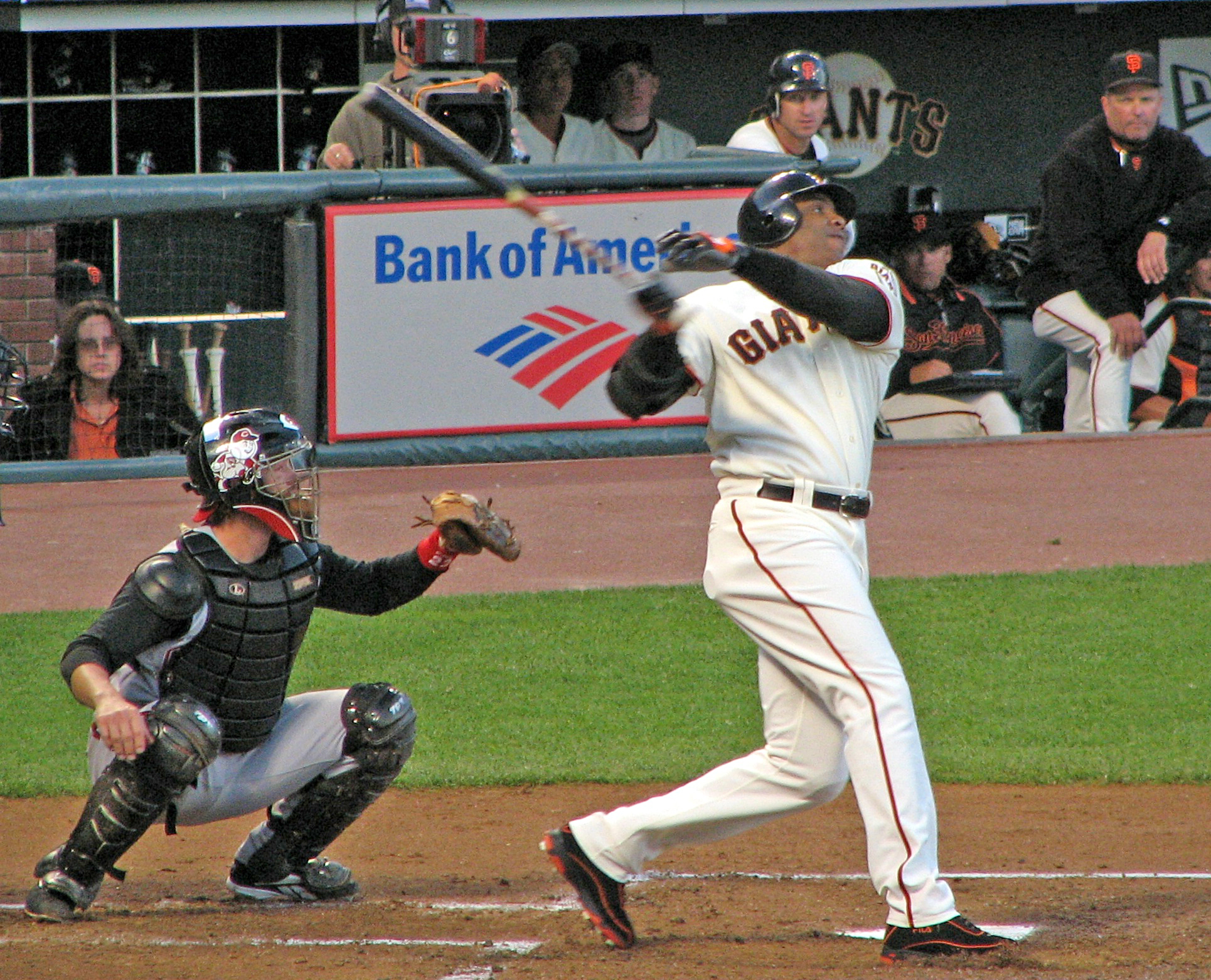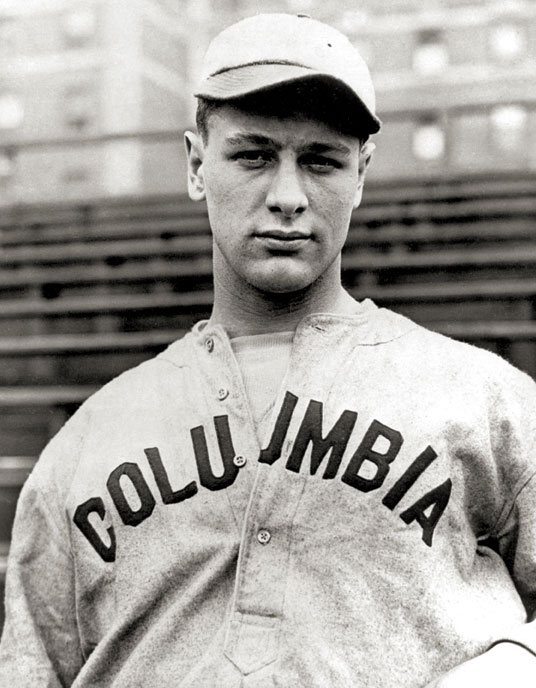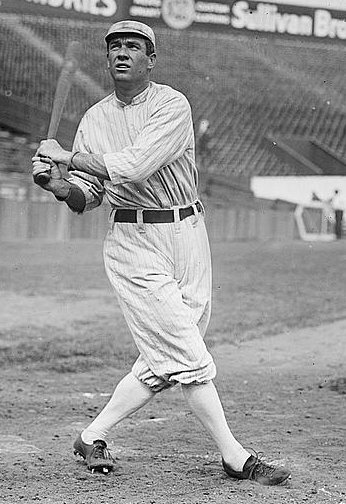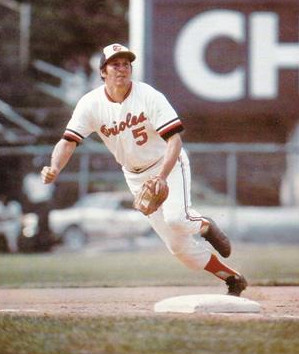|
1935 Detroit Tigers Season
The 1935 Detroit Tigers won the 1935 World Series, defeating the Chicago Cubs 4 games to 2. The season was their 35th since they entered the American League in 1901. It was the first World Series championship for the Tigers. The players As the 1934 Detroit Tigers won a club-record 101 games, the team made few changes in the off-season to alter their winning combination. Catcher/Manager: Mickey Cochrane Hall of Famer Mickey Cochrane returned as the team's manager and catcher. Known as "Black Mike", Cochrane is considered one of the greatest catchers of all time. In 1935, he hit .319 (9th in the AL) with a .452 on-base percentage (3rd in the AL), 96 walks (4th in the AL), 93 runs scored, and 33 doubles. Aside from his contributions as a player, Cochrane was invaluable as a manager and leader. Charlie Gehringer later said: "When Mickey was managing the Tigers from behind the plate I can't remember him ever fouling up anything. Seemed like he made snap judgments that always w ... [...More Info...] [...Related Items...] OR: [Wikipedia] [Google] [Baidu] |
Navin Field
Tiger Stadium, previously known as Navin Field and Briggs Stadium, was a Multi-purpose stadium, multi-use stadium located in the Corktown, Detroit, Corktown neighborhood of Detroit, Michigan, United States. The stadium was nicknamed "The Corner" for its location at the intersection of U.S. Route 12 in Michigan, Michigan and Trumbull Avenues. It hosted the Detroit Tigers of Major League Baseball (MLB) from 1912 Detroit Tigers season, 1912 to 1999 Detroit Tigers season, 1999, as well as the Detroit Lions of the National Football League (NFL) from 1938 Detroit Lions season, 1938 to 1939 Detroit Lions season, 1939, 1941 Detroit Lions season, 1941 to 1974 Detroit Lions season, 1974. Tiger Stadium was declared a State of Michigan Historic Site in 1975 and was listed on the National Register of Historic Places in 1989. The last Tigers game at the stadium was held on September 27, 1999. In the decade after the Tigers vacated the stadium, several rejected redevelopment and preservation e ... [...More Info...] [...Related Items...] OR: [Wikipedia] [Google] [Baidu] |
First Baseman
A first baseman, abbreviated 1B, is the player on a baseball or softball team who fields the area nearest first base, the first of four bases a baserunner must touch in succession to score a run. The first baseman is responsible for the majority of plays made at that base. In the numbering system used to record defensive plays, the first baseman is assigned the number 3. Also called first sacker or cornerman, the first baseman is ideally a tall player who throws left-handed and possesses good flexibility and quick reflexes. Flexibility is needed because the first baseman receives throws from the other infielders, the catcher and the pitcher after they have fielded ground balls. In order for the runner to be called out, the first baseman must be able to ''stretch'' towards the throw and catch it before the runner reaches first base. First base is often referred to as "the other hot corner"—the "hot corner" being third baseman, third base—and therefore, like the third baseman ... [...More Info...] [...Related Items...] OR: [Wikipedia] [Google] [Baidu] |
On-base Percentage
In baseball statistics, on-base percentage (OBP) measures how frequently a batting (baseball), batter reaches base (baseball), base. An official Major League Baseball (MLB) statistic since 1984, it is sometimes referred to as on-base average (OBA), as it is rarely presented as a true percentage. Generally defined as "how frequently a batter reaches base per plate appearance", OBP is specifically calculated as the ratio of a batter's times on base (the sum of Hit (baseball), hits, base on balls, bases on balls, and times hit by pitch) to the sum of at bats, bases on balls, hit by pitch, and sacrifice fly, sacrifice flies. OBP does not credit the batter for reaching base on error (baseball), fielding errors, fielder's choice, uncaught third strikes, Obstruction (baseball), fielder's obstruction, or catcher's interference, and deducts from plate appearances a batter intentionally giving himself up in a sacrifice bunt. OBP is added to slugging average (SLG) to determine on-base plus ... [...More Info...] [...Related Items...] OR: [Wikipedia] [Google] [Baidu] |
Batting Average (baseball)
In baseball, batting average (BA) is determined by dividing a player's hits by their total at-bats. It is usually rounded to three decimal places and read without the decimal: A player with a batting average of .300 is said to be "batting three hundred". If necessary to break ties, batting averages could be taken beyond the .001 measurement. In this context, .001 is considered a "point", such that a .235 batter is five points higher than a .230 batter. History Henry Chadwick, an English statistician raised on cricket, was an influential figure in the early history of baseball. He is credited with creating the modern box score, in 1859, and the practice of denoting a strikeout with a "K". Chadwick wrote in 1869: "In making up a score at the close of the match the record should be as follows:–Name of player, total number of times the first base was made by clean hits, total bases so made, left on bases after clean hits, and the number of times the first base has been made on ... [...More Info...] [...Related Items...] OR: [Wikipedia] [Google] [Baidu] |
Runs Created
Runs created (RC) is a baseball statistics, baseball statistic invented by Bill James to estimate the number of runs a hitter contributes to their team. Purpose James explains in his book, ''The Bill James Historical Baseball Abstract'', why he believes runs created is an essential thing to measure:With regard to an offensive player, the first key question is how many ''runs'' have resulted from what he has done with the bat and on the basepaths. Willie McCovey hit .270 in his career, with 353 doubles, 46 triples, 521 home runs and 1,345 walks -- but his job was not to hit doubles, nor to hit singles, nor to hit triples, nor to draw walks or even hit home runs, but rather to put runs on the scoreboard. How many runs resulted from all of these things? Runs created attempts to answer this bedrock question. The conceptual framework of the "runs created" stat is: RC = \frac where *A = On-base factor *B = Advancement factor *C = Opportunity factor Formula Basic runs created In t ... [...More Info...] [...Related Items...] OR: [Wikipedia] [Google] [Baidu] |
Total Bases
In baseball statistics, total bases is the number of bases a player gains with hit (baseball), hits. It is a weighted sum with values of 1 for a single (baseball), single, 2 for a double (baseball), double, 3 for a triple (baseball), triple and 4 for a home run. For example, three singles is three total bases, while a double and a home run is six total bases. Only bases attained from hits count toward this total. Reaching base by other means (such as a base on balls) or advancing further after the hit (such as a stolen base) does not increase the player's total bases. In Box score (baseball), box scores and other statistical summaries, total bases is often denoted by the abbreviation TB. The total bases divided by the number of at bats is the player's slugging percentage. Records Hank Aaron's 6,856 career total bases make him the all-time MLB record holder. Having spent the majority of his career playing in the National League (baseball), National League, he also holds that l ... [...More Info...] [...Related Items...] OR: [Wikipedia] [Google] [Baidu] |
Home Run
In baseball, a home run (abbreviated HR) is scored when the Baseball (ball), ball is hit in such a way that the batting (baseball), batter is able to circle the bases and reach home plate safe (baseball), safely in one play without any error (baseball), errors being committed by the Defense (sports), defensive team. A home run is usually achieved by hitting the ball over the outfield fence between the foul poles (or hitting either foul pole) without the ball touching the Baseball field, field. Inside-the-park home runs where the batter reaches home safely while the baseball is in play on the field are infrequent. In very rare cases, a fielder attempting to catch a ball in flight may misplay it and knock it over the outfield fence, resulting in a home run. An official scorer will credit the batter with a hit (baseball), hit, a Run (baseball), run scored, and a run batted in (RBI), as well as an RBI for each Base running, runner on base. The pitcher is recorded as having given u ... [...More Info...] [...Related Items...] OR: [Wikipedia] [Google] [Baidu] |
Lou Gehrig
Henry Louis Gehrig ( ; June 19, 1903June 2, 1941), also known as Heinrich Ludwig Gehrig, was an American professional baseball first baseman who played 17 seasons in Major League Baseball (MLB) for the New York Yankees (1923–1939). Gehrig was renowned for his prowess as a hitter and for his durability, which earned him the nickname "the Iron Horse", and he is regarded as one of the greatest baseball players of all time. Gehrig was an Major League Baseball All-Star Game, All-Star seven consecutive times, a Triple Crown (baseball), Triple Crown winner once, an American League (AL) Major League Baseball Most Valuable Player Award, Most Valuable Player twice and a member of six World Series List of World Series champions, champion teams. He had a career .340 batting average (baseball), batting average, .632 Slugging percentage, slugging average, and a .447 on-base percentage, on-base average. He hit 493 home runs and had 1,995 run batted in, runs batted in (RBIs). He is also one of ... [...More Info...] [...Related Items...] OR: [Wikipedia] [Google] [Baidu] |
Double (baseball)
In baseball, a double is the act of a batter striking the pitched ball and safely reaching second base without being called out by the umpire, without the benefit of a fielder's misplay (see error) or another runner being put out on a fielder's choice. A double is a type of hit (the others being the single, triple and home run) and is sometimes called a "two-bagger" or "two-base hit". For statistical and scorekeeping purposes it is denoted by 2B. Description Typically, a double is a well-hit ball into the outfield that finds the "gap" between the center fielder and one of the corner outfielders, bounces off the outfield wall and down into the field of play, or is hit up one of the two foul lines. To hit many doubles, a batter must have decent hitting skill and power; it also helps to run well enough to beat an outfield throw. Many of the best double hitting batters were revered for high baseball IQ and the ability to slide well and turn a single into an extra-base h ... [...More Info...] [...Related Items...] OR: [Wikipedia] [Google] [Baidu] |
Run Batted In
A run batted in or runs batted in (RBI) is a statistic in baseball and softball that credits a batter for making a play that allows a run to be scored (except in certain situations such as when an error is made on the play). For example, if the batter bats a base hit which allows a teammate on a higher base to reach home and so score a run, then the batter gets credited with an RBI. Before the 1920 Major League Baseball season, runs batted in were not an official baseball statistic. Nevertheless, the RBI statistic was tabulated—unofficially—from 1907 through 1919 by baseball writer Ernie Lanigan, according to the Society for American Baseball Research. Common nicknames for an RBI include "ribby" (or "ribbie"), "rib", and "ribeye". The plural of "RBI" is a matter of "(very) minor controversy" for baseball fans:; it is usually "RBIs", in accordance with the usual practice for pluralizing initialisms in English; however, some sources use "RBI" as the plural, on the basis ... [...More Info...] [...Related Items...] OR: [Wikipedia] [Google] [Baidu] |
Third Baseman
A third baseman, abbreviated 3B, is the player in baseball or softball whose responsibility is to defend the area nearest to third base — the third of four bases a baserunner must touch in succession to score a run. In the Baseball scorekeeping, scoring system used to record defensive plays, the third baseman is assigned the number 5. Third base is known as the "hot corner", because the third baseman is often the infielder who stands closest to the batter—roughly 90–120 feet away, but even closer if a Bunt (baseball), bunt is expected. Most right-handed hitters tend to hit the ball hard in this direction. A third baseman must possess good hand-eye coordination and quick reactions to catch batted balls whose speed can exceed . The third base position requires a strong and accurate arm, as the third baseman often makes long throws to first base or quick ones to second baseman, second base to start a double play. As with middle infielders, right-handed throwing players are ... [...More Info...] [...Related Items...] OR: [Wikipedia] [Google] [Baidu] |
Marv Owen
Marvin James Owen (March 22, 1906 – June 22, 1991) was an American baseball player, manager, coach and scout. A native of northern California, Owen played both baseball and football at Santa Clara University. He made his Major League Baseball debut in 1931, but spent the 1932 season in the International League where he was named the league's Most Valuable Player. He returned to the Tigers in 1933, became part of Detroit's "Battalion of Death" infield, and remained the team's starting third baseman from 1933 to 1937. He had his best season in 1934 when he compiled a .317 batting average with 98 RBIs. He was involved in a fight with Joe Medwick during the final game of the 1934 World Series that led to a near riot and Medwick's ejection from the game. In December 1937, Owen was traded to the Chicago White Sox where he played in 1938 and 1939 and compiled a career-high 305 assists in 1938. In December 1939, he was sold to the Boston Red Sox where he concluded his major lea ... [...More Info...] [...Related Items...] OR: [Wikipedia] [Google] [Baidu] |








